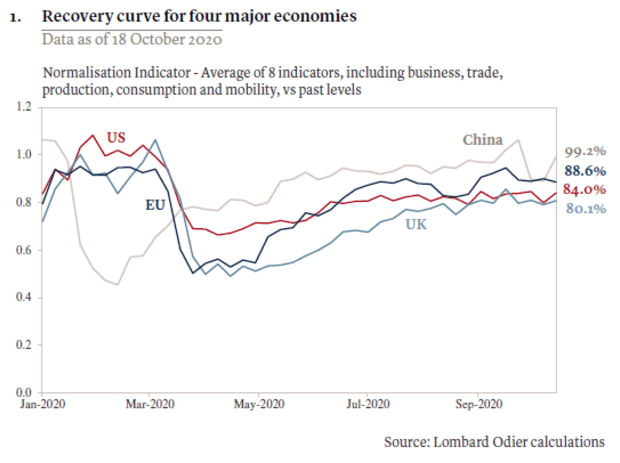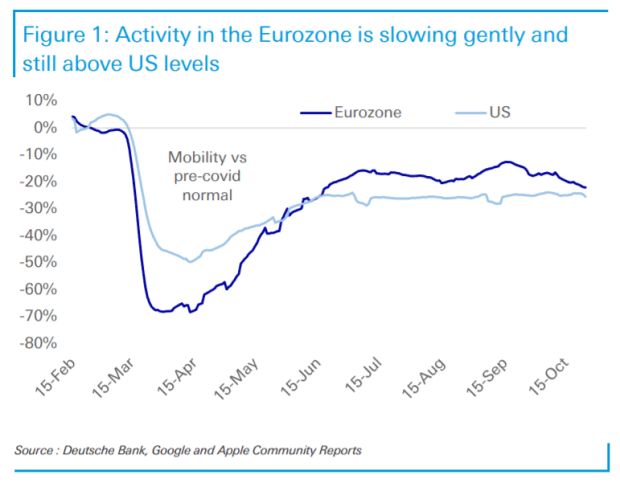This post was originally published on this site

Nursing staff prepare the use of a lung machine for a COVID-19 patient in the dedicated intensive care unit of the university hospital in Essen, western Germany, on October 28, 2020.
ina fassbender/Agence France-Presse/Getty Images
All across Europe, governments are introducing new measures to fight a second wave of the coronavirus pandemic. The region’s top economy, Germany, is set to introduce new restrictions, as French President Emmanuel Macron is preparing a televised address to limit activity. Italy already has moved to shut all restaurants and bars at 6 p.m., and Spain introduced a curfew.
But data from the region show that the European recovery has made more progress than the U.S.
Stéphane Monier, chief investment officer at Lombard Odier, released this chart showing the European Union economy at 89% of its normal level, compared with 84% in the U.S. It is based on an average of eight different indicators on business, trade, production, consumption, and mobility.

Robin Winkler and Shreyas Gopal, both London-based strategists for Deutsche Bank, found much the same thing. Though on the decline, activity in the eurozone is still running ahead of the U.S., through Sunday at least. They used data from Apple and Google. They noted that Europe’s second wave doesn’t really fit with the idea that there is a trade-off between low unemployment and low transmission rates.

In any case, market participants are spooked. The U.K. FTSE 100 UKX, -2.55% closed at its worst levels in six months, and the German DAX DAX, -4.17% slumped to its worst finish in five months. The S&P 500 SPX, -2.97% traded sharply lower.

